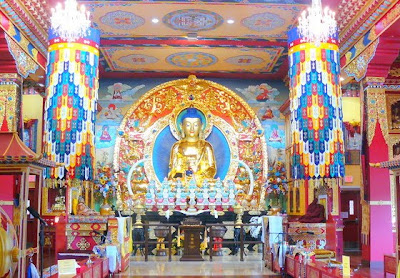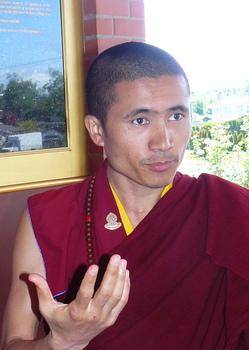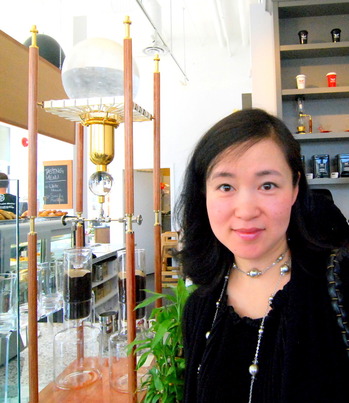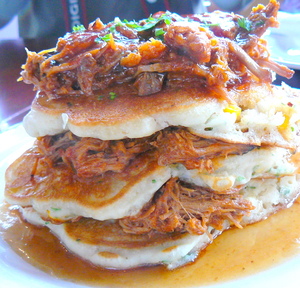RICHMOND, BC--You know the dilemma of ordering dinner in a foreign culture. Faced with a menu you can't read in a language you can't understand, or dishes you've never tasted and can't imagine eating, you point. "I'll have
that," you say, and hope for the best.
No need to be nervous in Richmond, though. Our group of Seattle food writers had banquet-style meals (one lunch, two dinners) in three of this city's top Asian restaurants, expertly guided by Melody Fury (she's the one on the right in the picture).
First order of business: XLB, a specialty of Shanghai. (So, no, it's not an extra-large burrito.) It's a pork-soup dumpling, Xiao Long Bao, handmade in the large open kitchen of Richmond's Shanghai River Restaurant. Sometimes, though not today, you can also see the cooks hand-pulling homemade noodles. But before we got to the XLB, we sampled pan-fried noodles with pork, bean curd with vegetables, wonton soup with steamed chicken, Shanghai-style pan-fried shrimp (heads on), sweet and sour rock cod, and Peking duck (served in two--or was it three?) courses.
From Shanghai at lunchtime to Cantonese for dinner, at Jade, where Tony Luk was named Chinese Chef of the Year in the 2011 HSBC Chinese Restaurant Awards. His specialties included a pan-seared jumbo scallop with a morel and porcini sauce, a grilled and braised short rib, a chicken roasted in a clay pot, and, best of all, a soup of fish maw with crab meat.
Our final Asian excursion was a quick dinner at a Hong-Kong style cafe, the Spicy Stage, where the specialty is a do-it-yourself noodle hot pot.
Melody's a Vancouver native who writes a popular food blog
gourmetfury.com and operates a company called
Vancouver Food Tour that actually reaches foodie destinations well into the BC hinterlands.
Richmond, in case you've forgotten, is a community of 200,000, just south of Vancouver. It's home to the largest immigrant community in Canada; half the people who live here are foreign-born, two-thirds of them Asian. The "Golden Village," four square blocks of downtown Richmond, has malls that remind travelers of Hong Kong, with some 300 shops and countless restaurants (Alexandra is called "Food Street"). And you have to parse "Chinese" into authentic Cantonese, Szechuan, Shanghainese, Northern Chinese, Thai, Vietnamese and Malaysian cuisine (let alone the rest of Asia, such as Japanese, Korean, Thai, Vietnamese, Filipino, Cambodian, Laotian, Indian, and so on.)
Now, should you be interested in replicating these banquets, you're in luck.
Tourism Richmond, which sponsored the media tour that brought me here last month, is offering
"The Ultimate Food Experience" as a contest prize or as a freestanding travel package.
Shanghai River Restaurant, 7831 Westminster Hwy, Richmond, BC, 604-233-8885















